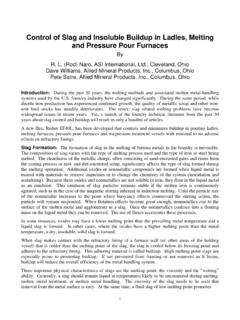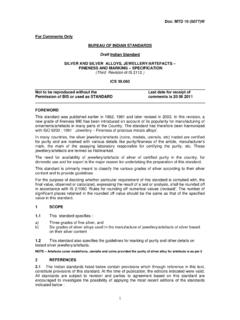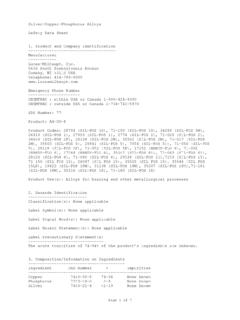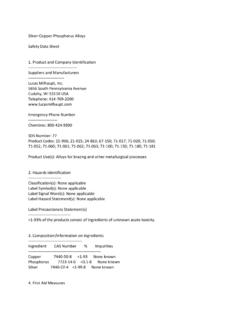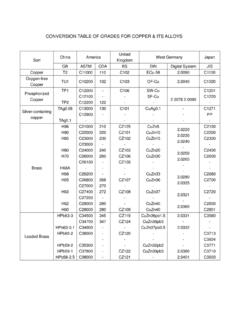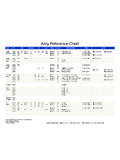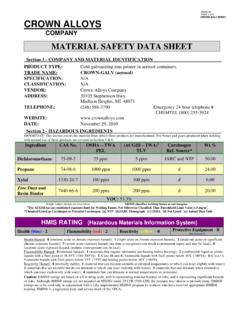Transcription of Porosity Defects in Iron Other methods ... - asi-alloys.com
1 silver Anniversary Paper, Div. 5 effective in eliminating Porosity . Additions of Zr silicide to a new, proprietary oxy-sulfide-containing inoculant was also very effective in eliminating Porosity . Porosity Defects in iron Other methods for eliminating Defects , although not nearly as practical, were core post-baking at 450F (232C) and use of core Castings From Mold-Metal coatings modified with red iron oxide. Interface Reactions BACKGROUND. Naro Surface and subsurface gas Defects have always been common and ASI International, Inc. troublesome Defects in gray iron and Other castings poured in green sand molds. Within the past 30 years, however, innovations in Cleveland, Ohio synthetic binder technology have resulted in movement away from green sand molding and toward total nobake molding and coremaking ABSTRACT processes and the accompanying new types of casting Defects . In the 25 years since the original paper was written, there have The growth in phenolic urethane binder technology since 1970, been considerable technical advances in foundry binder tech- the year phenolic urethane nobake (PUNB) binders were introduced, nology, as well as sand mixing and processing equipment.
2 The has been phenomenal (Fig. 1). When the original Porosity paper was techniques and equipment available to the foundrymen in 1974 written in 1974, only million lb of phenolic urethane binders were rather primitive, compared to today's improved binder were consumed by the foundry industry. In 1998, it is estimated chemistry and selection, mixing and binder metering equipment that 129 million lb of these resins (3079 truckloads, a truckload and sand reclamation technology. weighing 42,000 lb) were consumed in the United States. Estimated worldwide use is generally considered to be over 300 million pounds. This paper updates the original 1974 research on Porosity As a result of the increased acceptance and consumption of phenolic susceptibility of gray and ductile iron castings, prepared with urethane binders, occurrences of binder-related gas Defects have, at cores bonded with the, then, newly developed urethane types of times, become very troublesome in foundries using these systems.
3 Nobake binders. The 1974 study was aimed at delineating the effects of core- and moldmaking variables on Porosity suscepti- Generally speaking, there are three major sources that may bility and developing remedial practices to eliminate binder- contribute to Porosity formation in gray iron castings. These are: related Defects when they occur. Also investigated were the 1) high initial gas content of the melt, originating from either the effects of casting variables and how they relate to the occur- charge ingredients, melting practice or atmospheric humidity;. rence of such Defects . 2) reaction of carbon and dissolved oxygen under certain melt The updated research focused on the evaluation of current conditions;. resin technology, iron oxide additions, and the effects of poros- 3) mold-metal reactions between evolved mold and core gases at ity inhibiting ferroalloys. Lastly, Other unpublished research by the solidifying casting 16.
4 The author during the ensuing 25 years is also included. In addition, any combination of these three sources may have a cumulative effect on promoting Porosity formation. However, the gases normally held responsible for subsurface Porosity Defects are INTRODUCTION nitrogen and hydrogen. New and improved binder formulations of 1998 provided virtually There is a definite distinction between Porosity Defects and identical casting results compared to the 1974 research. Binder ratios blows. Porosity Defects are chemical in nature, and result when liquid of polyol resin to polyisocyanate component less than one (favoring metal becomes supersaturated with dissolved gases during melting higher levels of the polyisocyanate component) tended to increase or pouring. The ensuing discontinuities are present as discrete voids overall Porosity susceptibility. Balanced or ratios greater than one that may be rounded or irregularly shaped in the solidified casting, were, in general, not susceptible to defect formation.
5 Defect forma- and generally lie just under the casting surface. Conversely, blows or tion was enhanced by high pouring temperatures, especially when polyol to polyisocyanate ratios were less than one, and when high binder levels were employed. Poor binder dispersion from sand mixing was also responsible for increasing the overall susceptibility to these types of Defects . Poros- ity Defects resulting from use of unfavorable binder and/or casting practices could be eliminated by adding relatively small additions of red iron oxide (hematite or Fe2O3) to the sand mix. The use of magnetite or black (Fe3O4) grades of iron oxide were not nearly as effective in preventing Porosity . The addition of nitrogen-stabilizing elements, such as titanium and zirconium, were effective, to varying degrees, in eliminating Porosity . Best results were obtained with additions of proprietary Ti- bearing gray iron inoculants.
6 Addition of proprietary ferrosilicon- based inoculant alloys containing either Ti or Zr were also very Fig. 1. Phenolic urethane resin consumption in the United States. AFS Transactions 99-206 839. blowholes are a physical or mechanical problem related to the For comparison purposes, H and N contents of Other popular resin inability of decomposed core and mold gases to escape from the mold binder systems are: cavity, either through permeability or Nitrogen Hydrogen* H2O. Nobake oil none The appearance of the subsurface Porosity Defects resulting from Low N2 furan the preceding sources may take numerous shapes but usually form as Med N2 furan either small, spherical holes (sometimes elongated or pear-shaped), * Associated with organic components. called pinholes, or larger, irregularly rounded holes or irregularly shaped fissure type ,8,13,15,16 The internal surfaces of the Each of these elements, including moisture, may react or combine resultant holes may be 1) oxidized, 2) lined with a shiny graphite film in numerous ways to provide the necessary conditions that favor or 3) contain slag or manganese sulfide ,5,8 Porosity formation.
7 The following gaseous reactions are thermody- namically possible and, under the right conditions, may occur at the Although the technical literature contains a large amount of work mold-metal interface: describing Porosity Defects and the metallurgical practices that promote the occurrence and treatment of such Defects , relatively little Binder H (nascent) H2 (g). experimental work had been conducted in the area of chemical binder Binder N (nascent) N2 (g). induced mold-metal interface Porosity reactions. Investigations that Fe + H2O vapor (binder) FeO + 2H (nascent). have been conducted in this area have generally been limited to 3 H2 (binder ) + N2 (binder) > 2NH3 (g) 6H (nascent). discussions of potential problems existing when using high N (urea) + 2N (nascent). furans, and to a lesser extent, shell and oil-alkyd-isocyanate systems. FeO + C (binder) CO (g) + Fe Until 1974, minimal research had been conducted in determining While the first four reactions are likely to provide both surface how various core and moldmaking parameters affect the incidence of and subsurface Porosity Defects , the last reaction usually results only Porosity Defects with chemical binder systems.
8 This lack of research in surface Defects , such as pockmarking or, more frequently, lustrous has continued during the ensuing 25 years. carbon laps and surface When an organic binder thermally degrades, H and N are liber- CHEMICAL BINDER SYSTEMS ated in the nascent or atomic form. In this mono-atomic state, they are readily soluble in molten iron , and, if present, dissolve quite easily in The phenolic urethane resin system consists of nobake and gas-cured both molten gray and ductile irons. resins; both systems consist of two resin components. Part I is a phenolic resin (poly-benzylic-ether-phenolic resin) diluted approxi- If ammonia forms, it also may dissociate into both nascent H and mately 50% by solvents. Part II is a polymeric di-isocyanate resin N. Since the solubility of H and N in liquid iron is far greater than in diluted with approximately 25% solvents. The solvent can be either solid iron , these gases will precipitate out of solution as gas bubbles aliphatic or aromatic in composition.
9 During solidification, if they are present in amounts greater than the solid solubility limits. The primary purpose of the solvents is to reduce binder viscosity. Typically, the viscosities of the Part I and Part II resins are adjusted The shapes of the resulting gas holes may vary from small, widely to 200 cps (centipoise) or lower, to provide good pumpability, rapid dispersed spherical shaped holes, lying just under the surface, to and efficient sand coating qualities and good flowability of mixed numerous fissure type holes, often resembling shrinkage Defects , and sand. A second purpose of the solvents is to enhance resin reactivity. are usually perpendicular to the casting surface. In either case, An amine-based catalyst is used as the curing agent for the nobake absorption of N and/or H by the molten iron , either individually or binder, while a gaseous amine (triethylamine or dimethylethyl amine) jointly, may result in subsurface Porosity Defects .
10 Is used for the gas-cured binder. Clearly, many factors are involved in the development of binder- Although the general chemistry of phenolic urethane binders associated Defects ; neither they nor the various coremaking param- remains essentially the same as the system investigated in 1974, there eters and foundry melting variables that have a direct influence on the have been numerous changes in current resin formulations involving occurrence of such Defects were well understood in 1974. Recogniz- the solvent system, as well as base phenolic resin system. The Part I ing this situation, the object of the original research investigation was phenolic resin has been modified to reduce odor by reduction in the aimed at determining how such variables influence the occurrence of level of free formaldehyde. This becomes especially apparent when Porosity Defects . Also, the development of remedial techniques to hot foundry sands are used.
